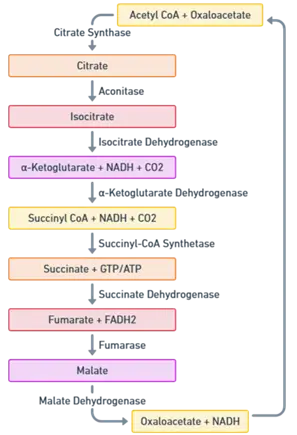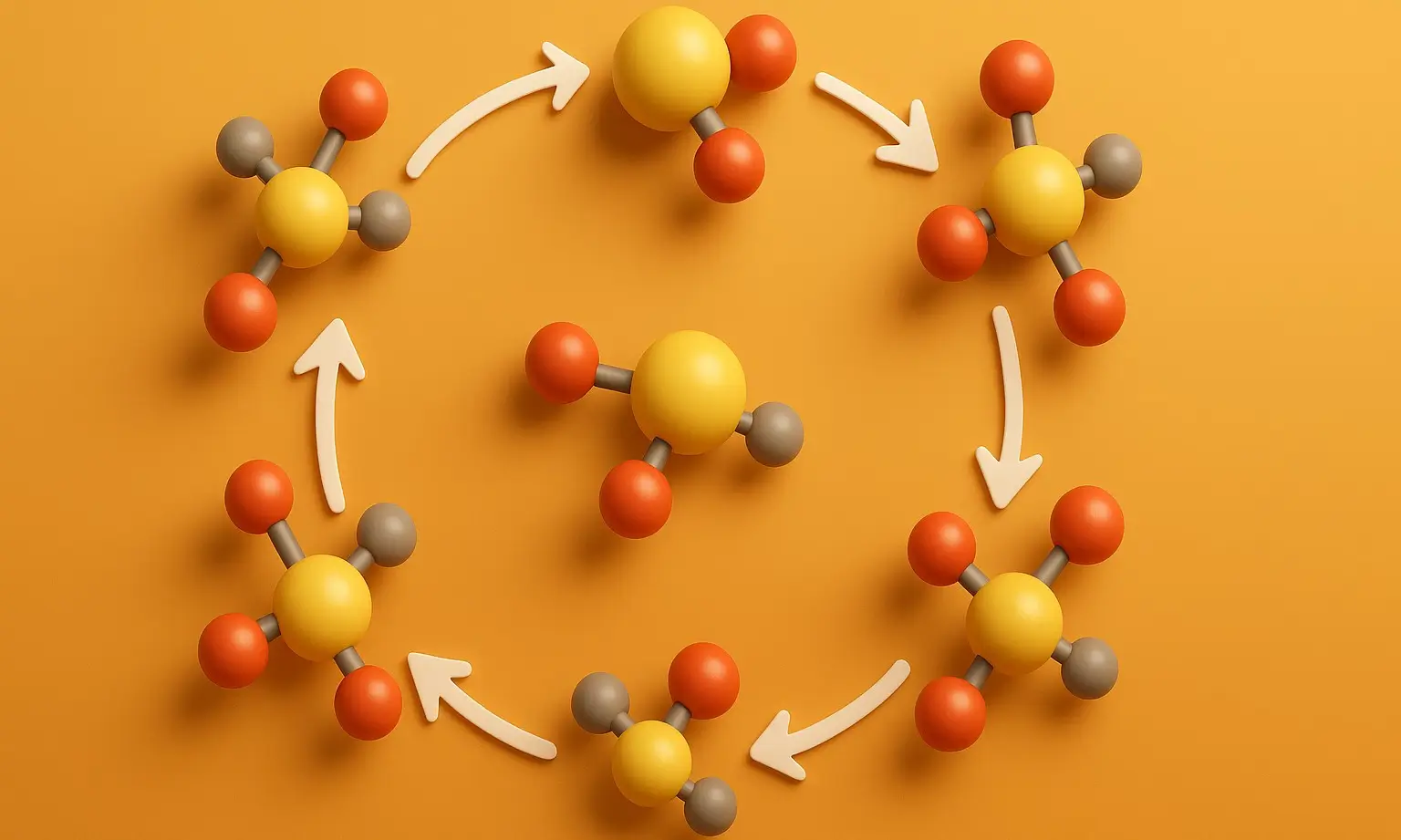- The Citric Acid Cycle, also known as the Krebs cycle or the Tricarboxylic Acid (TCA) cycle, is a cornerstone of cellular metabolism, pivotal in the breakdown and conversion of carbohydrates, fats, and proteins into usable energy.
- This cycle takes place in the mitochondrial matrix of eukaryotic cells, where it serves the dual purpose of generating high-energy molecules (ATP, NADH, and FADH2) and facilitating carbon dioxide excretion as a byproduct.
Citric Acid Cycle or Krebs cycle Pathway

- Overview of the Krebs Cycle Steps
-
Formation of Citrate:
- Enzyme: Citrate synthase
- Process: Acetyl CoA (2 carbons) combines with oxaloacetate (4 carbons) to form citrate (6 carbons), releasing CoA.
-
Isomerization to Isocitrate:
- Enzyme: Aconitase
- Process: Citrate is rearranged into isocitrate via cis-aconitate as an intermediate.
-
Oxidation and Decarboxylation to α-Ketoglutarate:
- Enzyme: Isocitrate dehydrogenase
- Process: Isocitrate is oxidized to oxalosuccinate (6 carbons), then decarboxylated to α-ketoglutarate (5 carbons), producing NADH and releasing CO2.
-
Further Oxidation and Decarboxylation:
- Enzyme: α-Ketoglutarate dehydrogenase complex
- Process: α-Ketoglutarate is further oxidized and decarboxylated to form succinyl CoA (4 carbons), generating another NADH and releasing a second CO2 molecule.
-
Conversion to Succinate of Citric acid cycle:
- Enzyme: Succinyl-CoA synthetase
- Process: Succinyl CoA is converted into succinate, producing one molecule of GTP (or ATP).
-
Oxidation of Succinate:
- Enzyme: Succinate dehydrogenase
- Process: Succinate is oxidized to fumarate, reducing FAD to FADH2.
-
Hydration to Malate:
- Enzyme: Fumarase
- Process: Fumarate is hydrated to form malate.
-
Oxidation to Oxaloacetate:
- Enzyme: Malate dehydrogenase
- Process: Malate is oxidized back to oxaloacetate, reducing NAD+ to NADH and preparing the cycle to begin anew.
Products of the Krebs Cycle per Acetyl CoA
- 3 NADH molecules: For use in the electron transport chain.
- 1 FADH2 molecule: Also, for use in the electron transport chain.
- 1 ATP (or GTP) molecule: Directly usable energy.
- 2 CO2 molecules: Waste products released.
Energetics of the Citric Acid Cycle
- 3 NADH → ~7.5 ATP (via oxidative phosphorylation)
- 1 FADH2 → ~1.5 ATP
- 1 GTP (or ATP) directly produced Each cycle generates around 10 ATP equivalents.
Significance of the Citric Acid Cycle
- Energy Production: Major source of ATP, NADH, and FADH2, essential for cellular energy.
- Anaplerotic Reactions: Intermediates are precursors for biomolecules like amino acids and nucleotides.
- Metabolic Integration: Links the metabolism of carbohydrates, fats, and proteins via Acetyl CoA.
- Regulation: Enzymes in the cycle are tightly regulated based on the cell’s energy needs.
- This simplified overview highlights the Citric Acid Cycle’s critical role in energy production and metabolic regulation.

